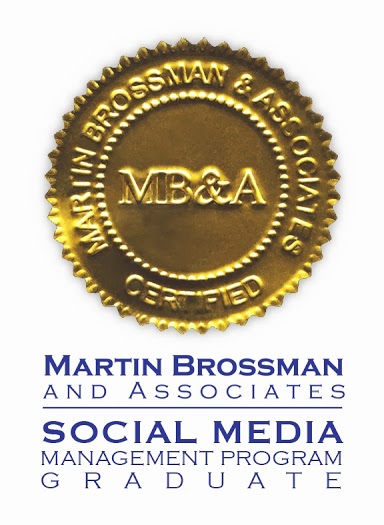I drive about 500 hours a year, and I listen to audio files most of the time I’m in the car, especially when I’m on the longer legs of a journey. I listen to lots of “how to be in business” content, as well as the occasional fiction; recently, I discovered college classes available for free from Open Yale. At 500 hours a year, a body gets a feel for what makes a good audio file and those courses from Yale crystallized my thinking. Here are some suggestions that can make your audio files easier to listen to, and perhaps, therefore, easier for your listeners to recommend to their friends.
File naming
Remember that MP3 players sort and display by the Title field, while many people work with their files by file name. Ideally, the two should be the same. If you are selling a series of files to your listening audience, it can be helpful to select file Titles that alpha-sort in the correct replay order. If you want your listeners to be able to select your file from a list in their player, you may want to think about including your name (or business name, or series name) in the file name. We your listeners are more likely to remember that we wanted to listen to “that latest download from John Gold” than we are to remember exactly what he called it.
We have the length of a red light to find the file. You can help us find your file, or not. We’ll listen to whatever comes next on the player when the light turns green if we haven’t found your file yet. (In addition, if your listeners are likely to be wearing reading glasses, they may not be able to see the display clearly anyway. The shapes of names we know are more easily recognized than the shapes of words in a title we don’t remember.)
Technical tweaks
- Repeat the name, host and basic identification information of the call after you start the recording. It’s disconcerting to be dumped into a conversation with no way to verify which file queued up next in the MP3 player, esp. when your listener may have loaded a dozen MP3 files onto a player at one time, and be driving on the highway while listening.
- If the call belongs to a series or package, identify its unit within the package.
- If the call has any kind of seasonal content, identify the at least the month or time of year during the introduction.
- Please please please put a large audience on auto-mute. Unless audience members have practice participating in large corporate conference calls, your call-in audience hasn’t learned to keep their own phone on mute. We, the listeners of your recorded product, do not want to hear you asking users to “press *6” a dozen times as people turn away from your content to address their own lives. I decided against purchasing a collection of one vendor’s products because the vendor managed “group mute” so badly on the free example audio files. I lost access to her content. She lost access to my $250.
- Lock your own dog up.
- Make sure the conference call software does not audibly announce hangups. It’s embarrassing to hear people drop off in the middle of the call and the speakers working not to pay attention to tones announcing that one more person got bored and left the call.
- Listen to the prompts your conference call software gives when you put the audience on and off all-mute. “Presentation mode enabled” takes eight syllables to convey two syllables of information: mute on.
- Consider your vocal volume, particularly for female speakers. The older your audience, the more likely they are to have some hearing loss. Please adjust your recording volume so that they can increase the playback volume on the audio file, if needed. More than one MP3 file is inaudible in parts to me because the speaker allows her voice to get very soft. (Few files recorded by men have this problem.) I am already have the volume cranked all the way up. (People who sell much more product record at a louder volume, and I am able to adjust the volume on their files downward.)
Note: It turns out that some conference call software has trouble with the volume for “remote hosts,” that is, when the voices of two people in different locations both matter to the quality of the call. (This is less important in a Q&A setting, where the host can always (and should) repeat the question.) - About those Umms and Uhhs: listen to yourself before you distribute the call. You will give a better impression of your expertise if you edit them out. Better yet, learn how not to use filler words and phrases in the first place: See the post, “Umms in Public Speaking” for a simple and easy-to-implement fix.
Content considerations
It’s highly probably that the worst offenders will not see themselves in the following items, in part because they have never given the matter serious consideration. Here’s a hint: they call it content for a reason.
Fill your audio file with CONTENT. Real information, steps, facts, your experience, perhaps even stories. Dale Carnegie teaches the “incident, point, benefit” model for public speaking and it works. Following any of a number of similar models helps speakers stick to the point. Read Made to Stick and check your transcripts against Chip and Dan Heath’s six factors.
Get the “I love us all, aren’t we great” welcome messages out of the way before you start the recording. I don’t want to hear very much at all about how fantastic, unique, special, devoted, determined, or any other adjective describing the audience, we all are for having the wisdom, good sense, foresight, judgment, or lack of productive alternatives to be on the call today. Chances are, I couldn’t make the live call and I’m listening to the recording some months later anyway.
Consider carefully before veering off into opinion or advice that you are not linking to a specific situation or incident. Very few speakers are skilled enough to deliver useful opinions into the ether. (I might add that few professional commentators are, either, but I don’t buy their files and they don’t read my blog.)
Interviews are particularly vulnerable to this problem. The host says, “tell us what you think about creating products….” and the guest goes off into, “Well, you have to work really hard to figure out what your audience wants…” and “then you may not sell very well if you don’t get your launch right…” and “people want to do joint ventures with me but they don’t bring a good game to the table…” and on and on and on. I yearn for a audio file transcript that I could edit with a red pencil, crossing out entire paragraphs of rambling opinion that fails to educate.
Here’s another hint: I don’t care what you think. I care about what you know, and about what you did, and what happened, and possibly about what you would do differently next time, as long as you can point to the reasons you would try something different.
I grew painfully conscious of rambling in audio files after listening to Kelly Brownell at Yale talk about food politics for semester. In 30 hours of audio downloads, Dr. Brownell and his guest speakers don’t waste a sentence on unsubstantiated opinion; every lecture is full of tangible facts and real information about food as we produce and consume it around the world today. Similarly, Ben Polak, although inclined to a few filler words and phrases, manages to deliver his understanding of Game Theory week after week without diverging into unsupported opinion.
I came back to “amateur” audio files with a shock as I found myself daydreaming not long into a call. I couldn’t have told you what the host and guest were saying. The third time it happened, I caught on. The speakers weren’t saying anything–that was the problem. It was just opinion, and advice, and telling us to work hard, and be original, and this, and that, and other rambling.
Phooey. Give me Game Theory if you can’t give me real marketing. At least Game Theory can explain elections.



[…] picture. The number of filler words in your audio file will decrease dramatically. (See the post, Creating High-quality Audio Files, for additional tweaks that will make your files sound more polished and […]